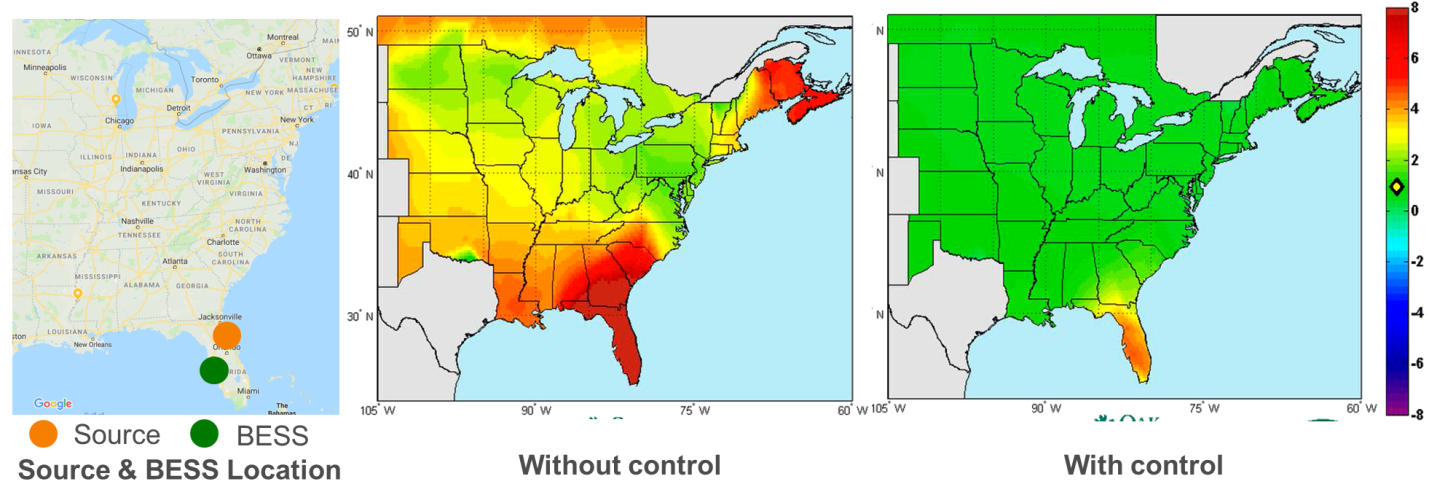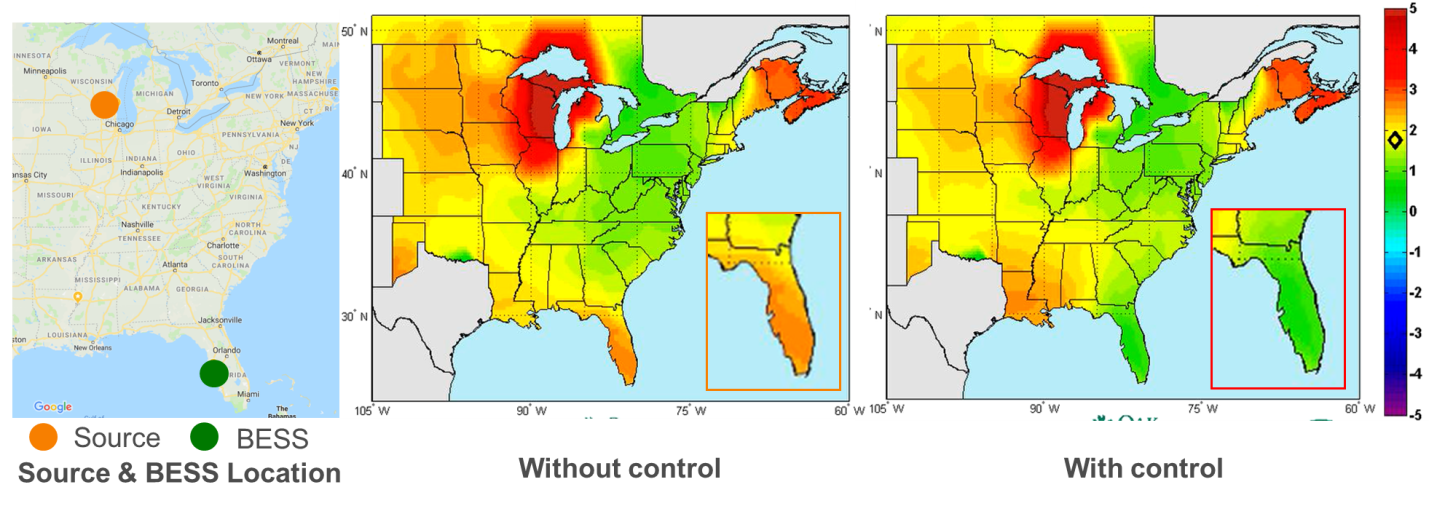Forced oscillations are sustained oscillations with nearly zero damping ratio caused by a periodic driving source. Since a forced oscillation with high energy could lead to system instability, equipment damage, and power quality issues, it is necessary to mitigate it as soon as possible. However, a forced oscillation can be persistent for several minutes and even several hours until the driving source is located and removed or the system operating condition is significantly changed. Before the periodic driving source is located and removed, it is feasible to reduce the magnitude and energy of the forced oscillations by fast active power modulation. This study investigates the potential of mitigating forced oscillation by modulating a utility-scale Battery Energy Storage System (BESS).
The most recent forced oscillation event that took place in Eastern Interconnection (EI) on January 11 2019 is replicated in the EI planning model. A realistic 409 MW/900 MWh utility- scale BESS model is built in the EI planning model. The utility-scale BESS model is built in the EI planning model, and a simple controller is designed. As shown in Fig.1 to Fig. 3, simulations demonstrate that fast active power modulation of BESS can reduce the magnitude of the forced oscillation to a much safer level, before the driving source is located and removed. Together with the existing source location tools, forced oscillations could be mitigated in a more active and effective way. This approach to mitigate forced oscillation can be applied to other inverter based resources, like PV plants and wind plants.
Moreover, the BESS/controller model, Python code, and demo on the two-area four-machine system can be downloaded.

Fig. 1 Control effect of BESS in 0.25Hz forced oscillation (source location: Florida)

Fig. 2 Control effect of BESS in 0.25Hz forced oscillation (source location: MISO)

Fig. 3 Control effect of BESS in 0.25Hz forced oscillation (source location: ISO-NE)
References
[1] NERC. Forced oscillation event analysis January 11, 2019 event.
[2] NERC. Reliability guideline – Forced oscillation monitoring and mitigation. Sep. 2017.
[3] Benchmark Systems for Small-Signal Stability Analysis and Control. [Online]. Available: http://www.sel.eesc.usp.br/ieee/index.htm


